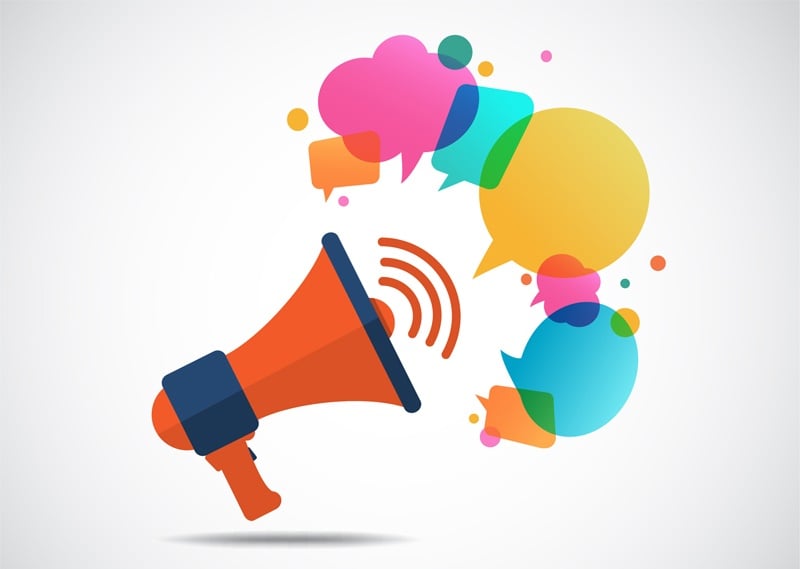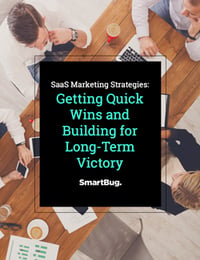
5 Marketing Campaign Examples Every SaaS Company Needs to Run
May 3, 2016
By Andrew Macey

Promotion is an integral component of SaaS marketing. Whether you are launching a new product, or an upgraded version of an existing tool, promotion early and often can build valuable momentum in lead generation leading to an increase in sales. The beauty of marketing your SaaS product online is that there is an abundance of new prospects at your fingertips. The challenge, however, is how to attract and convert them, in an environment filled with competition. What’s needed is differentiation; unique promotional campaigns that drives awareness and valuable leads.
SaaS companies usually start out marketing their products to their immediate audience and contact database. Although this is valuable, it’s important to spread messaging wide and attract new visitors as well. This blog will outline 5 promotional campaigns that every SaaS company should run.
1. Growth Hacking and Social Campaigns
Social media is a great platform to attract new, qualified traffic to your site and promote your SaaS product. Each year, more B2B companies use social media to search for new products and information about their industry, resulting in an increase in discussion and communication online. Using growth hacking techniques, SaaS companies can capitalize on the low-cost nature of social media and speak directly to groups of qualified individuals. In doing so, be sure to leverage existing professional groups on LinkedIn as well as popular hashtags on twitter, both of which can increase your following immensely.
2. News Releases
With the amount of information out on the web, B2B companies often turn to trusted news sources for industry and product updates. To leverage this already existing trust, SaaS companies can promote new products using news releases to targeted locations and industries. By doing so, industry publications and local news sources will pick up the article and publish the content to their audience. This helps SaaS companies in a few key ways. First, the credibility of these news outlets is already established. Professionals will read about your company and product from these sources, with an initial level of trust. Second, news releases result in quality inbound links. With any promotional campaign, search engine visibility is a must. Inbound links from these news sources have great authority and will boost the SEO value of the linked pages. Finally, each release should link to an offer or landing page. If included properly, there should be a boost in traffic to these conversion pages, resulting in an influx of new, qualified leads.
3. Targeted Email Campaigns
Chances are, your company has done some lead generation campaigns in the past, with which you’ve been able to grow a list of contacts. By segmenting these contact lists, SaaS companies can specifically target niches within their database and promote the content or products uniquely. Depending on the industry or job title, it is often valuable to reiterate certain pain points for that audience in your promotional emails, which link to the landing page or offer. You can expect higher open and click-though rates on these emails when targeting particular groups, compared to a generic email blast.
4. Co-marketing
Leveraging relationships with other companies that sell a complimentary product or to a similar industry can yield great results. Often, teams can work together on content offers or marketing campaigns and both reap the benefits. Consider doing some guest blogging on another company’s website, or co-writing an ebook together. Additionally, co-hosting webinars can result in great engagement and new leads for both companies. Often, strategies such as this can spread great awareness of new products and offerings to the audience, while also building your brand as a solution provider and thought leader.
5. Tradeshow Marketing
Tradeshows can be a great way to promote a new product for any SaaS company. For many B2B companies, their audience attends tradeshows and conferences throughout the year. These are often budgeted and planned in advance, with the expectation of learning about new products and fostering business relationships. For SaaS companies, exhibiting at tradeshows results in a number of new, sales qualified leads, resulting in more closed business. Additionally, tradeshows are a great platform to network with other industry leaders and connect with existing customers.
When running a promotional campaign for SaaS companies, it’s important to be where your audience is. Be sure to do research as to where they gather their information from, how they learn about new products, and where and how they interact on social media. Promotion of new products and updates should clearly explain the value proposition and how it solves major pain points for your personas.
What other promotional marketing campaigns have you found to be successful for your SaaS company?

About the author
Andrew Macey was formerly the Director of Sales at SmartBug and is a HubSpot alumni. He has more than 5 years experience in inbound marketing and is a graduate of the University of Vermont. Read more articles by Andrew Macey.








